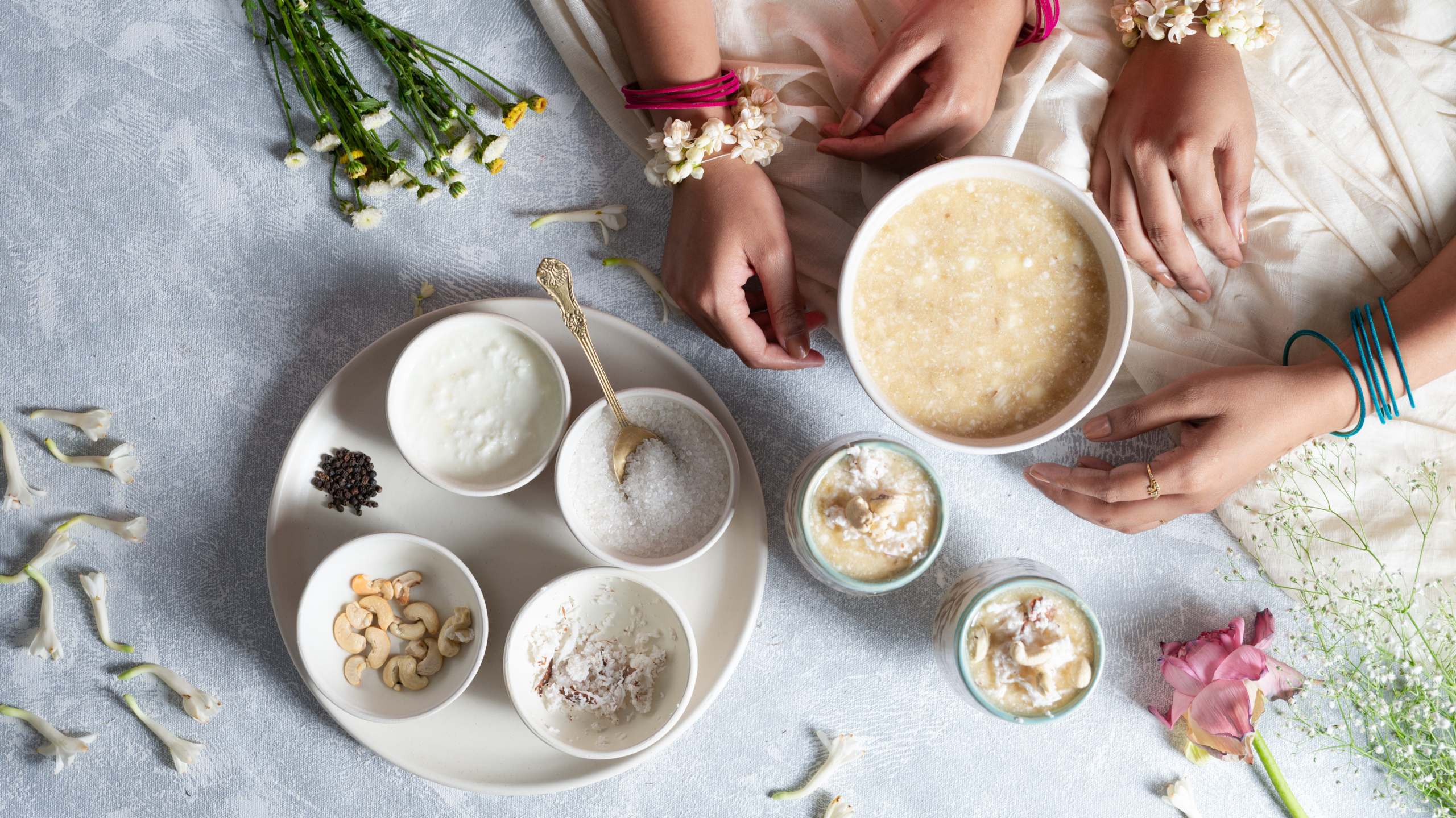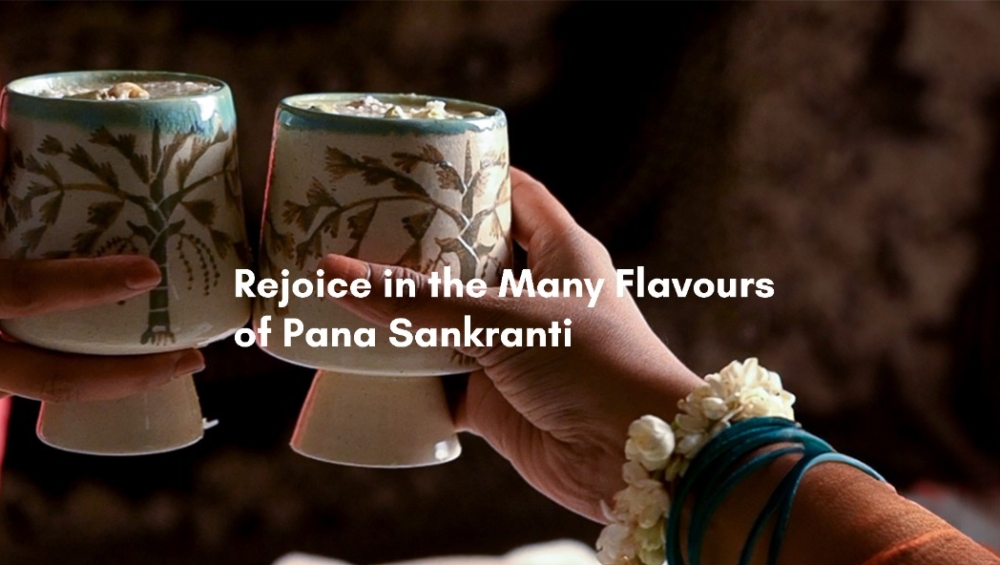India prides on being referred to as the “land of festivals”. While every other nation celebrates New Year on the 1st of January, Indians celebrate the usual as well as their regional new year with gusto. Those regions which follow the solar calendar, celebrate their new year in the month of Baisakha when the sun enters the Mesha Rashi (Aries) which generally falls on the 14th or 15th of April like Chet in Punjab, Bohag Bihu in Assam, Puthandu in Tamil Nadu, Vishu In Kerala, Pana Sankranti in Odisha and Poila Boishakh in West Bengal while those that follow the lunar calendar, celebrate their new year on the first day of the Chaitra month, like the Ugadi in Andhra Pradesh, Telangana and Karnataka and Gudi Padwa in Maharashtra. It is only in Gujarat and Rajasthan that the new year is celebrated on the first bright day of the Kartik month which falls on October or November.
THE MAGNIFICENCE OF PANA SANKRANTI
Pana Sankranti holds great significance for Odias, for its rich religious, cultural, and social value. It not only marks the beginning of the Odia calendar year and the launch of the Panjika, the traditional Hindu almanac This auspicious day is also observed as Hanuman Jayanti, commemorating both the birth of Lord Hanuman and His divine meeting with Lord Rama. Devotees offer pana (a sweet, cooling drink) and milk to Lord Shiva to pacify His fierce form. Lord Vishnu is also worshipped on this day, as it is believed that He rescued the Earth in His Varaha avatar and was also born in His Parashurama avatar on this very day. Coinciding with the welcoming of summer and the start of a new agricultural cycle, Pana Sankranti symbolizes renewal, victory, prosperity, and hope. It’s a day filled with positivity, fresh beginnings, and vibrant energy, uniting people across all walks of life in celebration.
In Odisha, tradition and a deep respect for nature go hand in hand. For generations, people here have lived in harmony with their surroundings, and many of their festivals and rituals reflect a heartfelt effort to honour and protect the natural world much like the ritual of Basundhara Theki. This involves dripping water through a perforated earthen pot on the Tulsi plant to honour the sun’s energy and its role in sustaining life. It protects the Tulsi plant from the harsh sun ensuring its continued growth and well-being. It is a symbol of prosperty and abundance.
Every celebration in Odisha is known for a signature dish or a special offering that brings the community together. Pana Sankranti is known by its prime element i.e., the beloved ‘Pana’ itself. More than just a drink, Pana is Odisha’s answer to the sweltering summer heat- a refreshment that reveals the essence of the land in every sip. This traditional super-drink not only refreshes and hydrates, but also awakens the senses, soothes the body, and excites you for the festive delicacies that follow. It’s a celebration in a glass, imbibed with nature’s best summer warriors and bursting with flavour.

Pana, unlike many good things in life, exists in palatable variety- each version distinct. Pana appeals to every taste bud and comforts every weary heart across the districts of Odisha, with each region adding its own unique touch to the mix. Much like the linguistic diversity in the state, the taste of Pana feels both familiar and distinct- a reflection of the region it comes from.
THE DIVERSE WORLD OF PANA
- Bela Pana– The most popular form of Pana during Pana Sankranti is the delightful Bela Pana as it is popularly believed that Lord Jagannath himself first prepared this cooling elixir for his devotees. It is a unique and refreshing blend made from the pulp of bela (ripe wood apple), water, chhena (unpressed Indian cottage cheese), sugar, and seasonal fruits like banana and grated coconut. Some prefer to add a dash of black pepper and salt to balance the flavours. This drink is harmony served in a glass, sweet and salty with a distinct taste and aroma that describes the essence of summer. Apart from its delightful flavour, Bela Pana is extremely healthy as the wood apple is packed with antioxidants and boasts medicinal and anti-inflammatory properties.
- Chhena Pana– This variety of Pana is a true delight for those with a sweet tooth. It is a wholesome blend of Chhena (unpressed Indian cottage cheese), ripe bananas, jaggery, and grated coconut, all gently mixed into fresh milk. Surprisingly light, creamy, and naturally sweet, this version is especially popular during fasting. It provides the right balance of hydration and nourishment, keeping the body energized and refreshed for long. For sweet abstainers, a less sweet version is prepared by adding crushed ginger, cardamom, and a dash of black pepper, lending it a unique taste unlike the conventional soft drinks.
- Dahi Pana– Dahi Pana is often offered to the deities during festivals. It is a simple yet wholesome blend of dahi (curd), jaggery, mashed bananas, and grated coconut. It is extremely light, refreshing, and naturally sweet. this variation not only hydrates effectively, but also enables us to brace the heat during summer months.
- Amba Pana– Amba Pana, made from raw green mangoes, is the best traditional summer refreshment. It is prepared by blending the tangy pulp of green mangoes with chilled water and seasoned with a pinch of black salt and black pepper. This drink is a natural coolant that helps regulate body temperature during scorching summers. It’s the perfect welcome drink, offering instant relief and rejuvenation after time spent outdoors.
- Mixed Fruit Pana– This variety of Pana is the perfect hydrating companion during the tropical summer months. It’s a juicy medley of finely chopped seasonal fruits- like bananas, grapes, apples, mangoes, and pomegranate- mixed with fresh curd, sugar, and chilled water. This traditional fruit punch is rich in vitamins and natural sweetness. It is not only cooling and delicious, but also incredibly nourishing and hydrating.
- Khai Pana– This is one of the more filling varieties of the beloved Pana. Mashed bananas are combined with Khai (parched rice), then blended with milk, curd, and jaggery to create a wholesome and satisfying drink. Naturally sweet and filled with the rich goodness of milk and curd, it not only refreshes the body but also serves as an excellent meal alternative, especially during the hot summer months.
- Chhatua Pana– Chhatua, also known as Sattu, is an age-old summer staple in Odisha. Chhatua Pana is prepared by mixing roasted chickpea flour with mashed bananas, seasonal fruits, and blending it all with curd, jaggery and chhena (unpressed cottage cheese). It is not only rich in protein and nutrients; this wholesome drink is both energizing and cooling-making it one of the best breakfast options in the tropics. It is the confidante that the body needs to combat the attacks of the harsh summer month.
- Palua Pana– Palua Pana, made from arrowroot powder, is one of the best traditional refreshments. It is a balanced blend of mashed bananas, shredded coconut, chhena (unpressed cottage cheese), crystallised sugar, and a hint of fennel-pepper powder, in curd or milk. Palua Pana fills the stomach and the heart and strikes the perfect balance between nourishment and refreshment, making it an essential part of the summer diet in many Odia households.
- Guda Pana– Guda Pana is a simple and soothing summer refreshment. It is prepared by infusing jaggery in water. A hint of edible amphor, dry ginger, and peppercorns is added to add a distinctive flavour. This brings a sense of calm and contentment, making it a beloved choice to beat the heat during the sweltering summer days.
The Odia New Year is nothing short of epic, celebrating nature, spirituality, and the human spirit, while honouring the timeless rhythms and constants of life. Explore the rich culture of Odisha, with a glass of pana and a renewed connection to nature and spirituality.









